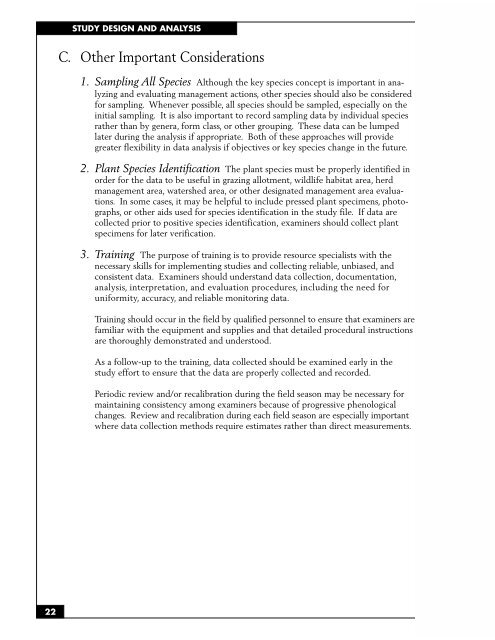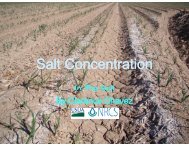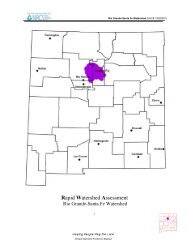SAMPLING VEGETATION ATTRIBUTES - New Mexico NRCS - US ...
SAMPLING VEGETATION ATTRIBUTES - New Mexico NRCS - US ...
SAMPLING VEGETATION ATTRIBUTES - New Mexico NRCS - US ...
You also want an ePaper? Increase the reach of your titles
YUMPU automatically turns print PDFs into web optimized ePapers that Google loves.
22<br />
STUDY DESIGN AND ANALYSIS<br />
C. Other Important Considerations<br />
1. Sampling All Species Although the key species concept is important in analyzing<br />
and evaluating management actions, other species should also be considered<br />
for sampling. Whenever possible, all species should be sampled, especially on the<br />
initial sampling. It is also important to record sampling data by individual species<br />
rather than by genera, form class, or other grouping. These data can be lumped<br />
later during the analysis if appropriate. Both of these approaches will provide<br />
greater flexibility in data analysis if objectives or key species change in the future.<br />
2. Plant Species Identification The plant species must be properly identified in<br />
order for the data to be useful in grazing allotment, wildlife habitat area, herd<br />
management area, watershed area, or other designated management area evaluations.<br />
In some cases, it may be helpful to include pressed plant specimens, photographs,<br />
or other aids used for species identification in the study file. If data are<br />
collected prior to positive species identification, examiners should collect plant<br />
specimens for later verification.<br />
3. Training The purpose of training is to provide resource specialists with the<br />
necessary skills for implementing studies and collecting reliable, unbiased, and<br />
consistent data. Examiners should understand data collection, documentation,<br />
analysis, interpretation, and evaluation procedures, including the need for<br />
uniformity, accuracy, and reliable monitoring data.<br />
Training should occur in the field by qualified personnel to ensure that examiners are<br />
familiar with the equipment and supplies and that detailed procedural instructions<br />
are thoroughly demonstrated and understood.<br />
As a follow-up to the training, data collected should be examined early in the<br />
study effort to ensure that the data are properly collected and recorded.<br />
Periodic review and/or recalibration during the field season may be necessary for<br />
maintaining consistency among examiners because of progressive phenological<br />
changes. Review and recalibration during each field season are especially important<br />
where data collection methods require estimates rather than direct measurements.




